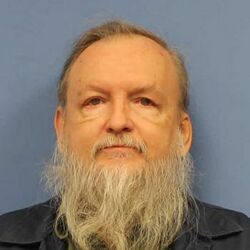Biography:Edward N. May
Edward N. May | |
|---|---|
 | |
| Born | |
| Died | 2022/1/28 |
| Education | Doctor of physics (philosophy) |
| Title | Dr |
| Scientific career | |
| Fields | Physics, Particle Physics, Experimental Physics |
| Website | Home page |
Edward N. May (194X – 2022) was an American physicist who worked in the field of particle physics. He received Ph.D in experimental particle physics from Rochester University (1976) for the study of the photo-production of vector mesons at 10 Gev Wilson Synchrotron Laboratory for which he constructed a liquid lead per chlorate electromagnetic calorimeter. As a postdoc at Argonne National Laboratory HEP (1977-1982) he constructed two cylindrical wire proportional chambers with delay-line readout around a liquid hydrogen target for and participated in a series of experiments with the Effective Mass spectrometer at the Argonne ZGS. As an assistant physicist (1983-1988), he participated in the proposal, design, construction and operation of the Soudan2 Proton Decay experiment at the Soudan Mine in Minnesota.
As a physicist he worked on detector simulation and the design of offline data processing for the ‘ill-fated’ SSC Laboratory and SDC detectors. This effort was redirected to the Atlas Experiment at the CERN LHC. He worked on the design and operation of parallel and distributed computing systems for detector simulations in world-wide GLOBUS based grid network environment. This served as a prototype and evolved into the current LHC Data Grid for analysis of LHC data and investigated HPC computing. His publication record includes more than 90 papers. [1].
Upon retirement, he continued to work part-time designing, building and operating small data acquisition systems for testing of prototype detectors designed and constructed at ANL-HEP which include a resistive-plate-chamber based hadron calorimeter and micro-channel-plate based photo-detectors. He begun to study Quantum Computing and its applications to Quantum Sensing devices for HEP.
References

